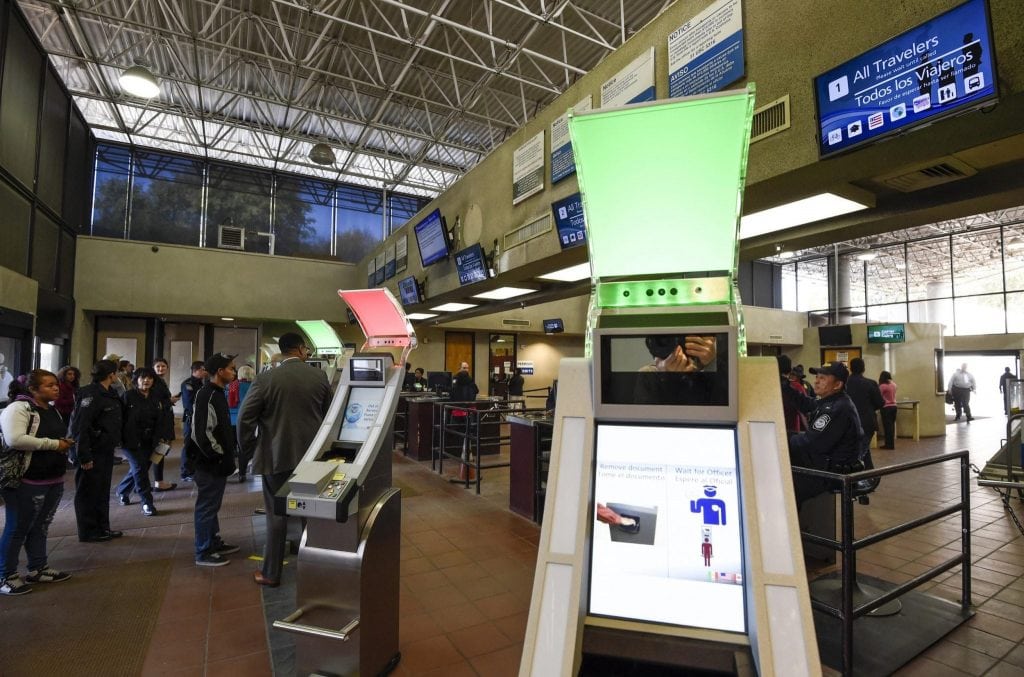Skift Take
It appears that the gloomy picture that U.S. tourism officials had painted of international arrivals in recent years wasn't actually as bleak as they thought. But a computer error isn't the only thing to blame for slower growth.
The U.S. National Travel and Tourism Office announced on Tuesday that nearly 77 million international travelers visited the United States in 2017, a 2 percent increase year-over-year. The new numbers come five months after the office suspended further data until it could fix discrepancies in its reporting and system for counting arrivals.
Before Tuesday’s announcement, the last time international arrivals data were released was in March when data for September 2017 was made public, and data for the remaining three months of 2017 were withheld. As of September 2017, international arrivals were down 5 percent year-over-year and 3.8 percent year-to-date, leading some to speculate President Donald Trump’s travel ban was impacting tourism as well the strong dollar.
Many U.S. travel companies use data from the National Travel and Tourism Office, part of the U.S. Department of Commerce, to project current and future demand, but many destinations, hotels, airlines, tour operators, and attractions also use other sources.
Canadian arrivals were up 4.8 percent for 2017 while Mexican arrivals were down more than 6 percent. Overseas arrivals (all countries except Canada and Mexico) were up 2 percent year-over-year.
U.S. Secretary of Commerce Wilbur Ross said the 76.9 million travelers who visited the United States in 2017 was a record high, and the $251.4 billion spent by international travelers was also a record (a two percent increase over 2016). “The United States enjoys a trade surplus of more than $77.4 billion for travel and tourism, and these exports help support more than 1.2 million American jobs,” said Ross, in a statement. “U.S. travel and tourism-related exports accounted for nearly 32 percent of all U.S. services exports and 11 percent of all U.S. exports, goods, and services alike.”
Data on residency, which the National Travel and Tourism Office collects instead of citizenship, was being miscounted at kiosks at a handful of large U.S. airports such as New York’s John F. Kennedy International Airport, prompting the National Travel and Tourism Office to suspend data, said Isabel Hill, director of the National Travel and Tourism Office. Hill said the issue didn’t impact every U.S. airport, but enough were affected to cause significant errors in data collection.
Kiosks, where international travelers scan their passports, have photos taken and enter identifying information, have been phased in at many international gateway airports in the United States in recent years to help expedite processing times at U.S. Customs and Border Protection checkpoints.
“We are confident that the issue has been resolved,” said Hill during a press conference on Tuesday. “The Department of Homeland Security did not recognize this discrepancy until it was brought to the National Travel and Tourism Office’s attention. Customs and Border Protection has reprogrammed those kiosks as of June this year, allowing us to receive corrected data for 2015, 2016, and 2017.”
Hill said that because of the data revisions and reprogramming, preliminary data show arrivals for 2015 were up and additional 0.8 percent. For 2016, some 540,000 travelers were added and arrivals were down 1.8 percent instead of 2.4 percent. In 2017, more than 3.8 million traveler records were added and arrivals were up two percent instead of down 3.1 percent which had originally been projected.
International arrivals for January, February, and March are up 8.1 percent, said Hill. International visitors spent $128.5 billion from January to June, up 3 percent from the same period in 2017. “If you look at the trending from 2015 to 2018, we begin to see a very positive upward trend,” she said and added that the office’s regular data release schedule will resume.
The Department of Homeland Security is currently transitioning from a legacy system that collects data, including on kiosks, to a new system. “We’re engaged with identifying the fields of information that we’ll require moving forward,” said Hill. “That new system we believe will shorten the time to market for getting new data out. We will be running those two systems concurrently and we’ll be making that transition at the time that we know data that we’re reporting continues to be accurate as well as timely.”
Hill said the National Travel and Tourism Office doesn’t measure the United State’s market share of global international arrivals, which organizations such as the U.S. Travel Association had said were down since 2015.
“The NTTO numbers released today are basically in agreement with the inbound analysis U.S. Travel’s economists have been putting together these last few months, said U.S. Travel’s president and CEO Roger Dow, in a statement. “The data picture is properly viewed through a certain lens: while raw visitation figures have been slowly rising, they are not keeping pace with the explosive growth we are seeing in travel and tourism worldwide. U.S. market share has eroded, which means we are not adequately harnessing global travel growth to keep adding jobs and exports to the U.S. balance sheet.”
It’s unclear if market share is still down after the data revision, and the U.S. travel industry will be watching data for the rest of 2018 to see if it shakes out as happily as the National Travel and Tourism Office feels it will.
The Daily Newsletter
Our daily coverage of the global travel industry. Written by editors and analysts from across Skift’s brands.
Have a confidential tip for Skift? Get in touch
Photo credit: The U.S. Travel and Tourism Office said on Tuesday that a problem at some U.S. Customs and Border Protection kiosks led to errors in international arrivals data. Pictured are pedestrians crossing from Mexico into the United States at the Otay Mesa Port of Entry wait to use biometric kiosks in San Diego. Denis Poroy / Associated Press
